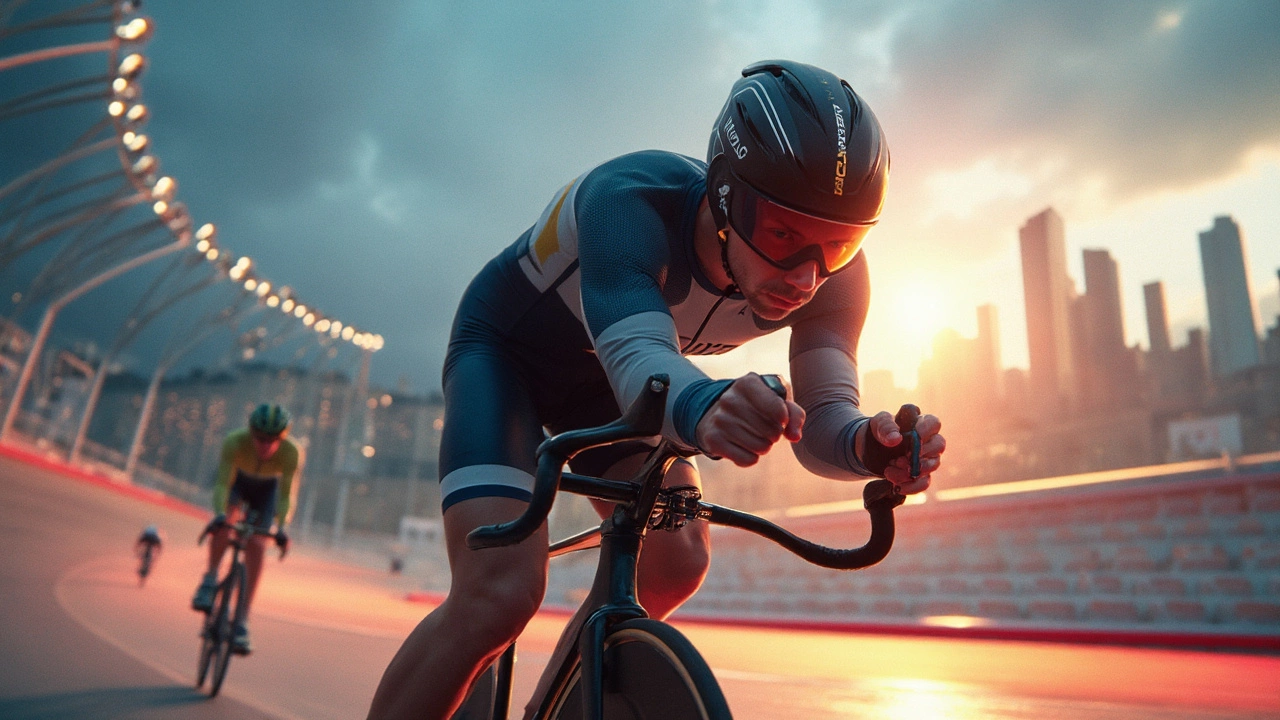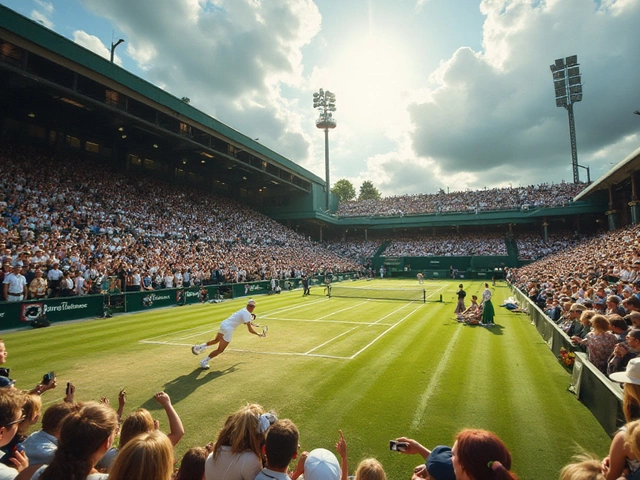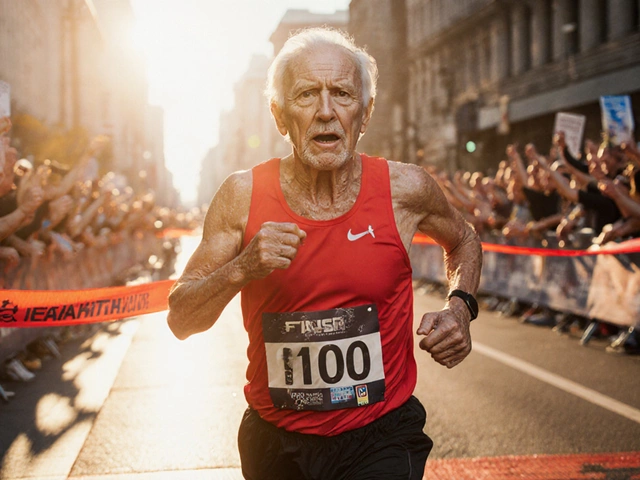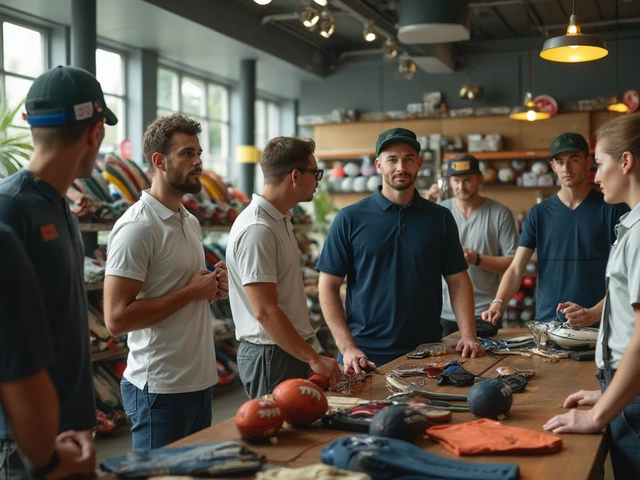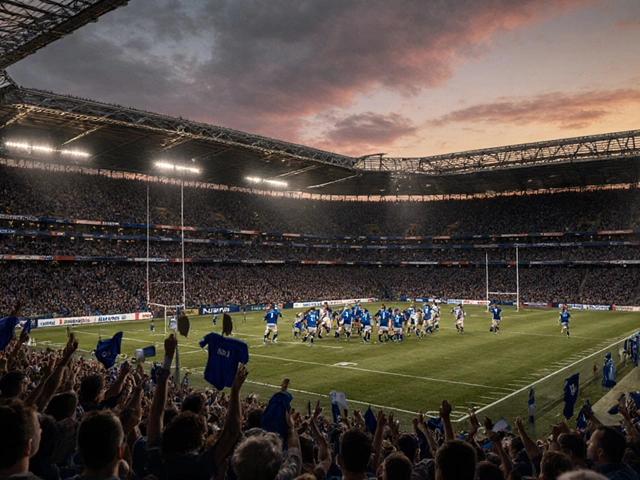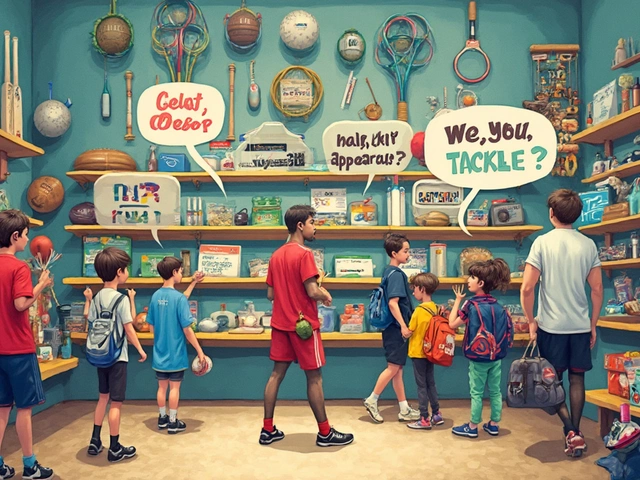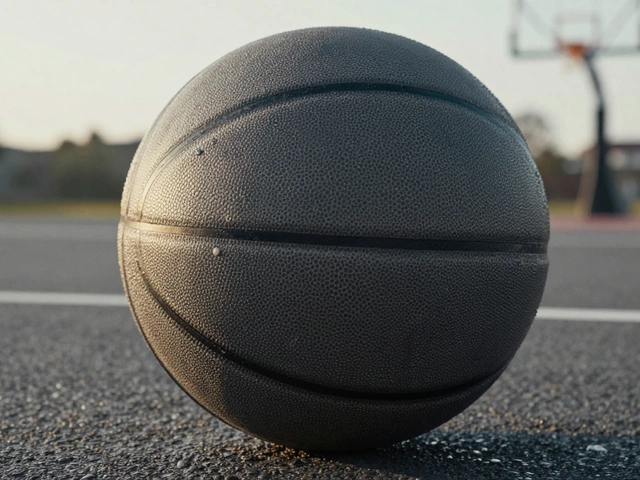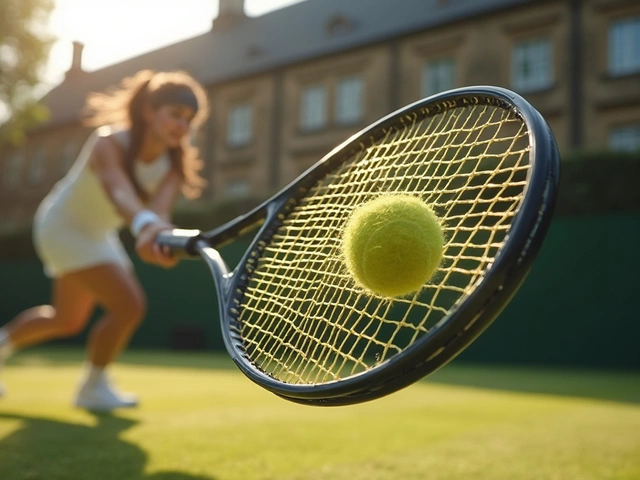You ever wonder if those star athletes—like the ones we see dominating the fields, courts, and arenas—use their own equipment? Well, the answer isn’t a simple yes or no. It's more like a curious mix of personal preference, sport requirements, and, believe it or not, business deals.
For many athletes, having gear that fits just right can make all the difference. Imagine running a marathon in shoes that aren’t quite your size, or swinging a bat that's too heavy. That's why custom equipment is a big deal. It's tailored to meet their specific needs, from basketball shoes designed to provide extra ankle support to tennis rackets with the perfect grip.
But it doesn't stop there. Different sports call for different gear. A swimmer doesn’t require the same equipment as a cyclist, obviously. This means every athlete interacts with their gear in unique ways, adapting it to suit the demands of their sport. And then there's the whole sponsorship angle. Big names like Nike or Adidas often step in, offering athletes custom gear as part of endorsement deals.
- Why Custom Equipment Matters
- Sports and Their Specific Equipment Needs
- The Role of Sponsorships in Equipment Choice
- Balancing Performance and Comfort
- How Personal Gear Affects Game-Day
Why Custom Equipment Matters
So, why all the fuss about custom equipment? It's not just about having fancy gear with your name embroidered on it; it's about optimizing performance. Athletes have unique body shapes, playing styles, and preferences that universal gear just can't cater to. Customization allows them to squeeze out every bit of potential they have.
Take shoes, for instance. For a runner, the right shoe can reduce injury risk. Some athletes have specific foot arches—they might need special support for balance and stability. Without the proper fit, a shoe can cause blisters or throw off their whole stride. Imagine running a marathon in that condition!
Enhancing Performance
Custom equipment often plays a hidden role in the game-day strategy. For instance, baseball players often have their bats customized—down to the weight and length. A slight change can mean extra control and improved swing speed, translating into that game-winning home run.
Comfort and Safety
Comfort is more than just a luxury. It's about avoiding distractions and making sure athletes can perform without anything holding them back. In a sport like cycling, customized handlebars can fit a rider's unique reach, giving them better control and reducing muscle fatigue over long distances.
Safety shouldn't be overlooked either. Properly fitting gear like a football helmet not only enhances comfort but is critical in preventing concussions and other injuries. Recent studies indicate that customized gear led to a 20% reduction in sports injuries over standard equipment.
| Sport | Custom Equipment | Impact on Performance |
|---|---|---|
| Running | Personalized Shoes | Improved Comfort & Reduced Injury |
| Baseball | Custom Bats | Better Control & Speed |
| Cycling | Tailored Handlebars | Enhanced Control & Reduced Fatigue |
In all honesty, athletes themselves know what works best for them. That's why custom gear isn't just a nice bonus—it's an essential part of their toolkit. It allows them to perform at their highest level, while still feeling comfortable and safe. So next time you see an athlete’s personal gear, you'll know it’s not just about style; it's about skill and precision.
Sports and Their Specific Equipment Needs
Let's break it down sport by sport, because what works for a basketball player won't be ideal for a cyclist. Each sport has its own set of gear that's not just optional but downright essential to achieve peak performance.
Basketball
In basketball, the right pair of shoes is more than just a fashion statement. Athletes need shoes with excellent ankle support and proper traction to make quick cuts and jumps. You'll often find that pros have custom gear created specifically for their feet, giving them the best advantage on the court. Plus, let's not forget the importance of materials that wick away sweat, keeping players dry and focused.
Swimming
Swimmers look for swimwear that's streamlined to reduce drag. We're talking high-tech swimsuits that seem like they're straight out of a sci-fi movie. The gear extends to swim caps designed to keep hair in place and reduce water resistance. Goggles also fall into this category, with lenses that can be customized to suit pool or open water conditions.
Cycling
Cyclists aim for the lightest and most aerodynamic bikes possible. Weight and wind resistance can make a huge difference in performance. Custom seats and handlebars are common to ensure comfort during long races. And, of course, don't underestimate the significance of a well-fitted helmet, which is vital for safety.
Football
When it comes to football, pads and helmets are must-haves for safety, but they mustn't be cumbersome. Players often get sports gear tailored to provide maximum protection without sacrificing mobility. Cleats are another critical piece, giving players the traction needed for explosive speed and quick direction changes.
| Sport | Key Equipment | Customization |
|---|---|---|
| Basketball | Shoes | Ankle support, traction |
| Swimming | Swimwear | Drag reduction |
| Cycling | Bike | Aerodynamics, lightweight |
| Football | Pads, cleats | Protection, mobility |
All in all, the type of sport often dictates not just the kind of equipment athletes use but also how personalized this gear needs to be. It's a blend of comfort, performance, and safety—each aspect equally critical for success in any sport.
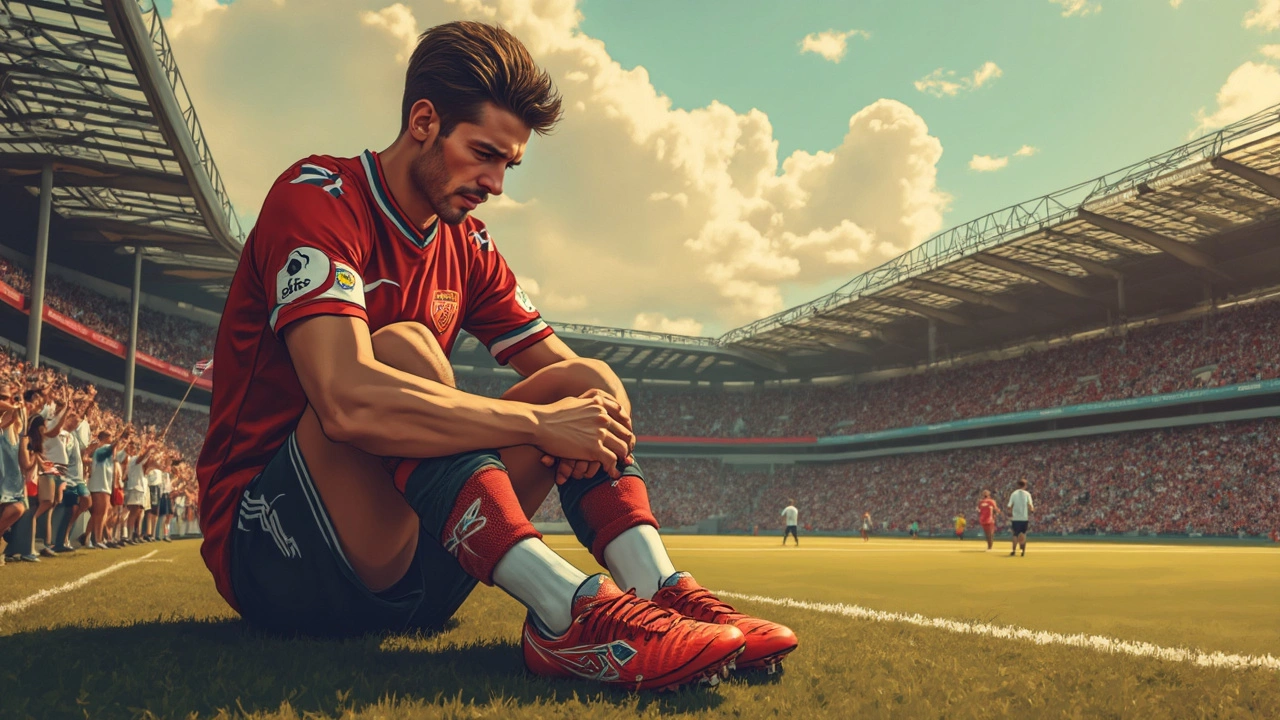
The Role of Sponsorships in Equipment Choice
When it comes to the gear athletes use, sponsorships often play a huge part. Think about it: brands like Nike, Adidas, and Under Armour make sure their logos are plastered all over sports events. Why? Because they want top athletes using and endorsing their gear.
For many athletes, these deals are a win-win. They get access to cutting-edge sports equipment, often customized just for them, and in return, they promote the brand. Take Serena Williams, for example. Her partnership with Nike isn't just about wearing their gear—she's involved in designing it, ensuring it fits her needs perfectly.
Custom Gear from Brands
Think custom sneakers, unique rackets, and personalized jerseys. Sponsors invest a ton into research and development to make sure their athletes outperform the rest. It’s a simple logic—if an athlete wins using their gear, it boosts the brand's credibility.
Financial Benefits and Restrictions
Sponsorship contracts can be quite lucrative. However, they often come with specific terms. Athletes might be required to use only the sponsor's gear during competitions and public appearances. This might limit some personal gear choices but the financial trade-off can be immense.
A famous case is Roger Federer's switch from Nike to Uniqlo, which reportedly was a $300 million deal over ten years—not too shabby for wearing new gear!
Impact on Equipment Choice
While personal gear brings comfort, sponsors ensure it's also peak-performance ready. Athletes may push for modifications or a particular design, but ultimately, it's a collaboration.
Here's a fun fact: some contracts even include bonuses for Olympic medals or setting new records using their sponsored equipment. Having such incentives not only uplifts the brand but also keeps athletes motivated to bring their A-game every time they step out.
So, next time you see your favorite athlete in action, know that their equipment isn't just a random choice; it's a blend of personal needs, brand strategy, and a bit of smart advertising!
Balancing Performance and Comfort
When it comes to choosing the right sports equipment, athletes always strive for a balance between peak performance and maximum comfort. Sure, those cutting-edge soccer cleats might look great, but if they pinch your toes, you won't be scoring many goals!
The sports equipment technology has come a long way, offering adjustable features allowing athletes to personalize fit and feel. Take basketball players, for example. They often seek shoes that provide ample support during those quick pivots and jumps, without sacrificing comfort during a game that can last for hours.
Comfort: Not Just a Luxury
Comfort isn't just about feeling good. It's about preventing injuries. Poorly fitting sports gear can lead to blisters, strain, and more serious injuries that could sideline an athlete for months. LeBron James once mentioned that his basketball shoes underwent 40 modifications to cater to his needs while ensuring peak performance.
"The right gear doesn't just enhance performance; it prevents injuries and prolongs careers." - Dr. Emily Parker, Sports Medicine Specialist
Performance: The Edge That Counts
While comfort is crucial, performance features often take the spotlight, especially in elite sports. Golfers, for example, may use clubs with custom grips to ensure they can swing with precision, maximizing their control and power. Every inch matters at high competition levels, and tailored equipment often becomes their secret weapon.
Even in team sports like football, personal gear can have individual adjustments. Linemen may opt for reinforced padding, while quarterbacks might select lighter, more flexible pads to enable agile movements.
Finding the sweet spot between these two factors isn’t just luck or trial and error but involves constant feedback and collaboration with manufacturers. Many professional athletes spend years fine-tuning their gear to fit like a glove—literally and figuratively!

How Personal Gear Affects Game-Day
When it's time for the big match, athletes know they need to bring their A-game in more ways than one. The personal gear they choose can be a game-changer. It's not just about looking good, although that's a bonus, but about performance, comfort, and even mental readiness.
Performance Boost
Think about it: top athletes often have every detail of their gear customized to suit their playing style. This isn't just about being picky. For example, a professional golfer might have clubs designed specifically for their swing speed, optimizing distance and accuracy. That's precision engineering in action, helping them shave strokes off their game.
As basketball legend Michael Jordan once said, "The shoe is half the battle." His partnership with Nike showed how pivotal equipment could become in not just enhancing performance but redefining it entirely.
Comfort Zone
Let's talk about comfort. When an athlete is comfortable, they're less likely to get distracted by annoyances like blisters or pinched toes. Runners, for instance, often choose shoes that offer the right balance of support and cushioning to prevent injuries over long distances. Imagine trying to focus on the finish line dealing with painful footwear. Not gonna happen!
Mental Edge
There’s also a mental element to it. Familiar gear can instill confidence, giving athletes that psychological edge. Skiers, for instance, often trust their safety to helmets and goggles fitted specifically for them, knowing they can tackle slopes with full concentration.
Sponsorship Complications
However, the choice of equipment isn't always purely personal. Sponsorship deals mean athletes sometimes must switch gear to suit their brand partners. This doesn’t always sit well, as some athletes might have to adapt quickly to new equipment, which can disrupt their usual flow.
It's interesting to note that according to a recent survey, about 60% of professional tennis players customize their rackets to improve their game specific to playing surfaces. Here’s a tiny peek into their world:
| Surface | Racket Customization |
|---|---|
| Clay | Heavier rackets for control |
| Grass | Lighter rackets for speed |
All these considerations highlight why equipment is such a strategic element in sports. Athletes from diverse realms—whether it's running tracks, golf courses, or cycling tours—know the right gear keeps them competitive.
